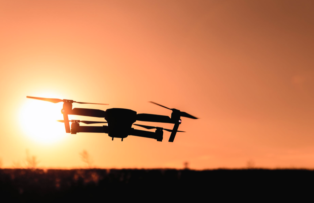The FCC proposed rules to enable wireless communications for unmanned aircraft system use in the 5030-5091 MHz band on Wednesday. The agency also seeks comment on whether measures are necessary to facilitate this use of flexible-use wireless networks.
Today, unmanned aircraft systems, or drones, primarily operate under unlicensed and low-power wireless communications rules or experimental licenses. Given the important current and potential uses for these systems, the Commission says it will consider ways to improve the reliability of their operations.
Chairwoman Jessica Rosenworcel said it was past time to assess the availability of wireless communications resources “for the increasingly important remote-piloted aircraft activity.” She said: “The FCC must ensure that our spectrum rules meet the current – and future – spectrum needs of evolving technologies such as unmanned aircraft systems, which can be critical to disaster recovery, first responder rescue efforts, and wildfire management.”
The Notice of Proposed Rulemaking seeks comment on service rules for the 5030-5091 MHz band that would provide drone operators with access to licensed spectrum with the reliability necessary to support safety-critical unmanned aircraft systems (UAS) communications links. In the NPRM, the agency also seeks public input on whether the Commission’s rules for various flexible-use spectrum bands are sufficient to ensure co-existence of terrestrial mobile operations and UAS use. Do current rules need changes to prevent or mitigate interference and performance concerns, the FCC asks in the NPRM.
To further promote the safe integration of unmanned aircraft operations in controlled airspace and facilitate flight coordination, the NPRM proposes a process for UAS operators to obtain a license in the aeronautical VHF band to communicate with air traffic control and other aircraft while maintaining the integrity of the band. The NPRM was developed in collaboration with the FAA and NTIA.




Reader Interactions